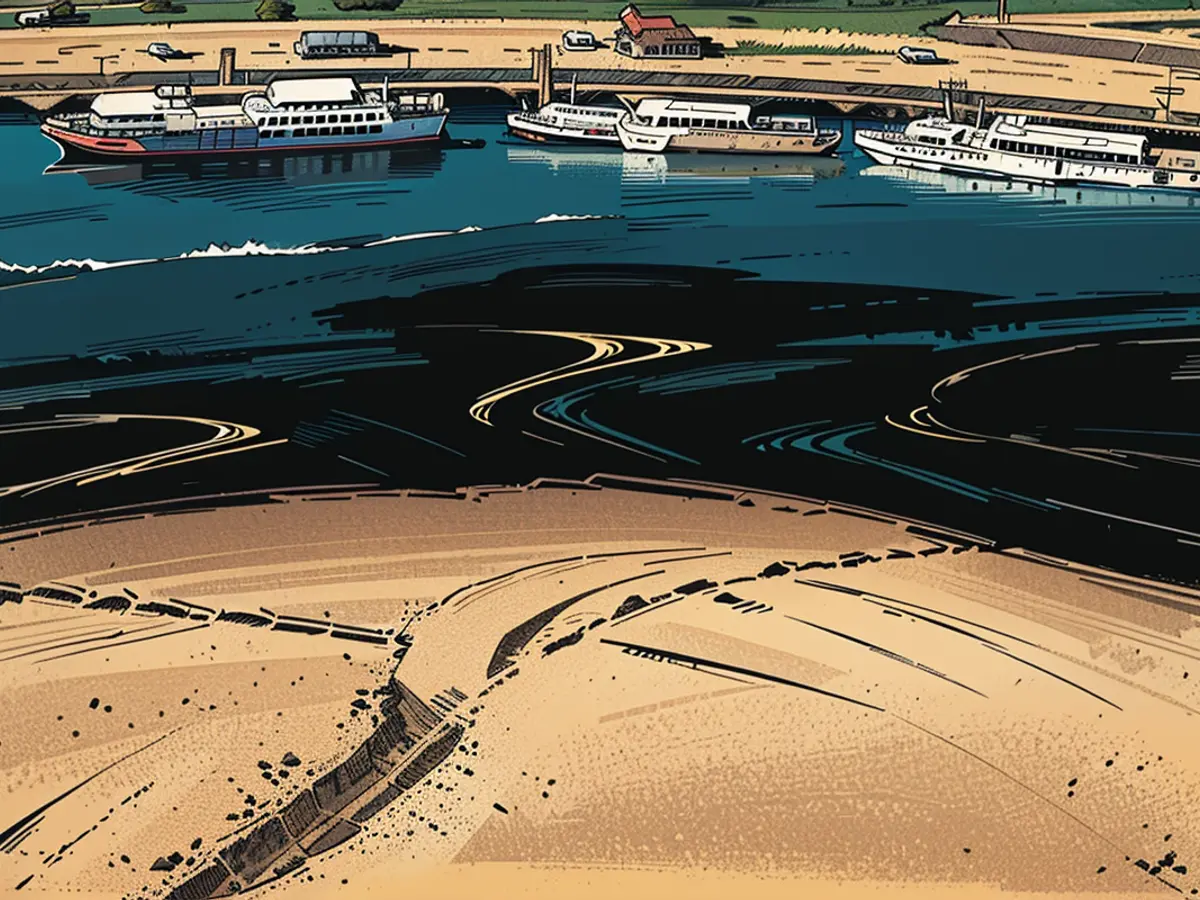"Southern regions are expected to endure the scorching heat until no less than Tuesday."
As per the weather forecasters, summer concludes by August's end. According to meteorologist Björn Alexander in an interview, this year's sweltering season ranks high in the climate data. However, the overall consensus is that we've encountered an erratic summer, boasting few idyllic and tranquil phases for the entire nation.
What's the long-term assessment of the summer heatwave across Germany?
Björn Alexander: While the comprehensive analysis of the summer will not be finalized until September, some crucial elements are already determined. Essentially, we've faced a tempestuous summer. Intense periods of peace and relaxation for the whole of Germany has been few and far between. A repeat of this unpredictable pattern has become a persistent trend throughout the seasons, subsequently resulting in a slightly above-average precipitation during summer. Consequently, the wettest areas in Bavaria have reported approximately 650 to 750 liters of precipitation per square meter.*
Which regions have experienced the least precipitation?
The weather station in Genthin, Saxony-Anhalt, reports minimal rainfall this summer with approximately 100 liters per square meter. Significant regional disparities have emerged, attributable to the concentration of thunderstorms and showers. For instance, Saxony-Anhalt's dry spell in Genthin has been offset by a noteworthy surplus of precipitation in Kemberg-Radis, exceeding the summer average by over 300 liters per square meter - effectively around 60% more than in Genthin.
How about the temperature balance?
Presently, we're hovering around 18.5 degrees, representing a surplus of 2 degrees compared to the 1961-1990 standards, with an anticipated solar yield of around 700 hours of sunshine.
Will the "rollercoaster summer" persist into the meteorological autumn commencing on Sunday?
Preliminary forecasts indicate that September will begin with a summer-like warmth, sustained by the ongoing volatility. However, experimental long-term forecast predicts September 2024 to be moderately average to marginally dry, with around 60 liters of rainfall per square meter, leaving ample scope for an extended and Indian summer.
What's the expected temperature growth in September?
Although a slight drop is possible, conditions can potentially turn remarkably hot as well. Given climate change, extremely cold or even frigid months are now considered rare or improbable.
When did we last see extremely cold months?
This occurred in April 2023, April 2022, and August 2021.
What proposals does the weather prognosis present?
We are poised to reach the apogee of the heatwave today. Consequently, many regions will surpass 30 degrees, with peak temperatures of 35 or 36 degrees. This aligns with previous heatwave peaks this year. The hottest spot thus far was Bad Ahrweiler/Neuenahr in Rhineland-Palatinate, registering a sweltering 36.5 degrees on August 13th.
What awaits us following this peak?
As our "Piet" high-pressure system weakens and moves along, "Quentin," a new high, approaches from the southwest. However, a nascent vacancy allows the outer perimeters of the "Wilhelma" North Sea low to venture in, luring fresher northern air temporarily toward our nation's northwest. Subsequently, the warm and humid summer air continues to linger at times. A turbulent air mass boundary is forming in between.
What consequences does this imply for the upcoming days?
In the south, this change won't materialize soon, hence the heatwave persists until at least Tuesday of the following week. Conversely, the northwest will temporarily chill out before the summer air advances northward, possibly heralding thunderstorms in certain regions.
Which locations are most at risk from thunderstorms?
This encompasses a band stretching from the Eifel and Lower Rhine to the Baltic Sea, both day and night on Friday, and Thursday afternoon.
What hazards do we face?
In addition to the intensifying heat stress worsened by soaring humidity, the likelihood of forceful thunderstorms is a concern. During thunderstorms, heavy precipitation, hail, and violent winds are not an unthinkable scenario.
What can we anticipate weekend-wise?
Rain and thunderstorms are likely to plague the center of the country on Saturday. The potential for showers and thunderstorms increases on Sunday, primarily in the west and southwest. Elsewhere, the forecast suggests a predominantly sunny and dry weekend.
What temperatures can we look forward to?
On Friday, temperatures will reach sweltering heights in the south and east - 28 to 34 degrees, marking a striking contrast to the north and west with only 21 to 23 degrees.
Over the weekend, the heat spreads northward. As a result, temperatures will be increasingly humid-warm to humid-hot, especially on Sunday, with temperatures ranging from 25 to 33 degrees. Only the coastal areas will remain refreshingly cool at around 20 degrees.
What's in store for the upcoming week then?
Kicking off the fresh week, we've got a mix of sunshine and thunder showers, keeping the humidity up to around 32-33 degrees Celsius. Area near the coast, however, will stay fairly chill with temperatures hovering between 20-22 degrees.
Has any unusual weather phenomenon occurred during this year's summer?
Germany has witnessed an unusual summer pattern this year, characterized by its erratic nature and high temperature rankings.
What type of weather can we expect for the upcoming September, according to preliminary forecasts?
Preliminary forecasts suggest that September 2024 will begin with a summer-like warmth, followed by moderate averages and dry conditions, allowing for an extended Indian summer.







